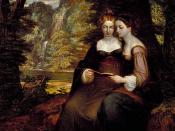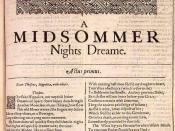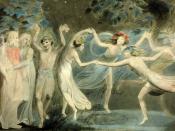Love is a timeless topic. It will forever be the theme of popular entertainment and source of confusion for men and women alike. No one understands this better than William Shakespeare, and he frequently explores this complex emotion in his writing of great works. In A Midsummer Night's Dream, the poem may appear to have some of the elements necessary in the making of a good tragedy: a young woman forced to yield to her father's will and marry a man she does not love or face a life of celibacy or death, a duke willing to uphold a law that allows a father to kill his daughter if her desires do not match her father's wishes, and another woman, though try as she might, can not win the love of the man she adores. There are instances through out the play that could be argued as dark or sober moments, especially for the female characters that seem to be dominated by male authority.
These "dark" moments however, are the necessary ground work that inspires the female characters to refute male dominance, which causes a chain of events. All action must be carried out through the characters of A Midsummer Night's Dream; all ideas must be transported to the audience through their moves and dialogue.
The first and most obvious characters are the four mortal lovers. The women, Helena and Hermia who were once best friends, are now each others worst enemies all because of Puck intervening with a love potion. They use to have complete trust in each other, telling each other their deepest secrets, going to school together, weaving, and doing other things that close friends would do. To some people, Helena and Hermia became the same person, saying the same things, thinking the same thoughts...


